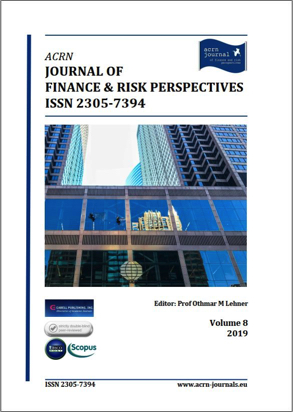Natasha Ahmetaj, Merita Bejtja, 2019, Determinants of the Real Equilibrium Exchange Rate in Albania: An Estimation Based on the Co-integration Approach, ACRN Journal of Finance and Risk Perspectives, 8 (1), 84-94

Natasha Ahmetaj, Merita Bejtja
Bank of Albania
Abstract
Problem/Relevance: Investigation of exchange rate behaviour has been an important topic in international monetary economics because of the impact of exchange rates on economies. One strand of the literature has focused on explaining the observed movement of the nominal or real exchange rate in terms of macroeconomic variables. Another strand of the literature has evaluated the behaviour of the real exchange rates in relation to the equilibrium exchange rate, which is the real exchange rate that is consistent with macroeconomic balances. Albania implements a free floating exchange rate regime; therefore, evaluating whether the actual real exchange rate is too strong or too weak compared with the real equilibrium exchanges rate has great relevance for the Albanian economy.
Research Objective/Questions: Generally, the real exchange rate is defined as the nominal exchange rate adjusted for the relative price differential between domestic and foreign goods and services. So, an appreciation of the nominal exchange rate or higher inflation at home relative to other countries may lead to an appreciation of the real exchange rate. Such appreciation weakens the competitiveness of a country, widens the current account deficit and increases vulnerability to financial crises. The opposite holds true when the real exchange rate depreciates. The aim of this paper is, first, to estimate the equilibrium real exchange rate for the Albanian currency against the euro and, second, to assess the total exchange rate misalignment during the period of 2001Q1-2017Q1. Thus, the equilibrium real exchange rate is used as a benchmark for evaluating the misalignment of the actual real exchange rate.
Methodology: This paper explores the determinants of the real exchange rate for Albania, during the period of 2001Q1-2017Q1, based on the stock-flow approach, the so-called Behavioural Equilibrium Exchange Rate (BEER), which effectively employs reduced-form modelling of the exchange rate based on standard co-integration techniques. The stock of net foreign assets and productivity changes has been considered fundamental for the real exchange rate. We have used the Johansen co-integration technique to test the existence of long-run relationships between our main variables and to evaluate the path of the equilibrium real exchange rate based on vector error correction model (VECM) results. Then the analysis is completed by calculating the degree of misalignment as the difference between the actual real exchange rate and the equilibrium real exchange rate.
Major Findings: Based on the Johansen co-integration approach, we find one long-run relationship between the real exchange rate of the Albanian lek against the euro, relative productivity and net foreign assets during the period of 2001Q1 to 2017Q1. The model implies that the real exchange rate is affected, as we expected, by relative productivity and net foreign assets, confirming that an increase in both variables leads to an appreciation of the real exchange rate in the long run. Our results show that the behaviour of the actual real exchange rate is similar to the path of the equilibrium exchange rate and that the degree of misalignment throughout the period is estimated to be moderate.
Implications: Our empirical results confirm that the degree of misalignment is reasonable, suggesting a consistency between macroeconomic (especially monetary) policies and the free floating exchange rate regime. Assessing real exchange rate misalignment is a very important issue for policy makers because of the severe welfare and efficiency costs that such misalignment can have for an economy.
Jel Classification: C22, F31, F32
Key words: Equilibrium exchange rate, Co-integration analysis, BEER
Back to Volume 8